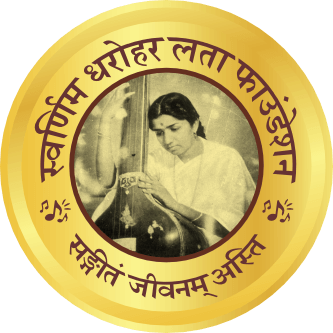Lata Mangeshkar, the Nightingale of India, was not just a singer but an institution in herself. Her voice became the soul of Indian cinema, shaping its golden era and influencing generations of music lovers. Over a career spanning nearly eight decades, she lent her voice to thousands of songs, transcending time, language, and musical styles.
The Rise of a Legend in Indian Cinema
Lata Mangeshkar’s journey began in the 1940s when she entered the film industry dominated by strong, nasal voices. With her melodious, soft, and emotive singing, she redefined playback singing, making it more expressive and natural. Her breakthrough came with “Aayega Aanewala” from the film Mahal (1949), which marked the beginning of an illustrious career that saw her voice immortalized in countless classics.
The Golden Era: 1950s–1970s
During the Golden Age of Bollywood, Lata Ji was the voice behind every leading actress, adding depth and emotion to their on-screen personas. Her collaborations with legendary music directors like Naushad, S.D. Burman, Shankar-Jaikishan, Madan Mohan, and Laxmikant-Pyarelal resulted in some of the most timeless songs in Indian cinema. Some of her iconic contributions include:
- “Pyar Kiya To Darna Kya” (Mughal-e-Azam, 1960)
- “Ajeeb Dastan Hai Yeh” (Dil Apna Aur Preet Parai, 1960)
- “Lag Jaa Gale” (Woh Kaun Thi?, 1964)
- “Tere Bina Zindagi Se” (Aandhi, 1975)
Her voice became synonymous with leading ladies like Madhubala, Nargis, Meena Kumari, Hema Malini, and Rekha, making her an inseparable part of Bollywood’s narrative.
Evolution and Versatility: 1980s–1990s
Even as Bollywood’s musical style evolved, Lata Ji effortlessly adapted, collaborating with younger composers like R.D. Burman, Kalyanji-Anandji, and later A.R. Rahman. Her ability to emote through songs remained unparalleled, evident in:
- “Tujhse Naraz Nahi Zindagi” (Masoom, 1983)
- “Dil Deewana” (Maine Pyar Kiya, 1989)
- “Didi Tera Devar Deewana” (Hum Aapke Hain Koun..! 1994)
- “Jiya Jale” (Dil Se, 1998)
These songs introduced her voice to new generations, proving that her magic was eternal.
Lata Mangeshkar’s Contribution Beyond Bollywood
Lata Ji’s influence wasn’t limited to Hindi cinema. She sang in over 36 languages, enriching regional film industries in Marathi, Bengali, Tamil, Telugu, Gujarati, and Punjabi. Her patriotic songs, like “Ae Mere Watan Ke Logon”, brought the nation to tears, and her spiritual renditions remain a source of solace for millions.
Awards and Recognition
Her unparalleled contribution to Indian music earned her numerous accolades, including:
- Bharat Ratna (India’s highest civilian award)
- Dadasaheb Phalke Award
- Padma Bhushan & Padma Vibhushan
- Multiple National Film Awards & Filmfare Awards
She was the voice of Indian cinema, and her awards are a testament to the legacy she built through sheer talent and dedication.
A Voice That Lives Forever
Lata Mangeshkar’s songs remain immortal, continuing to inspire and evoke deep emotions across generations. Her contribution to Indian cinema is unparalleled, making her an eternal figure in the world of music and films. Her golden legacy is not just in the melodies she left behind, but in the hearts of every music lover who finds solace in her voice.
Which of Lata Ji’s songs holds a special place in your heart? Let us know in the comments below! 🎶

